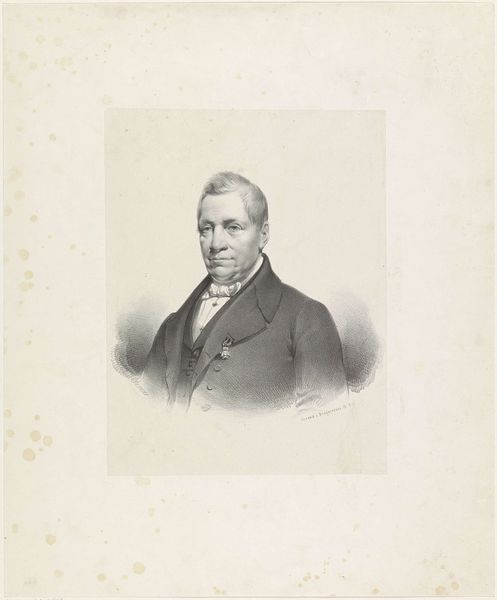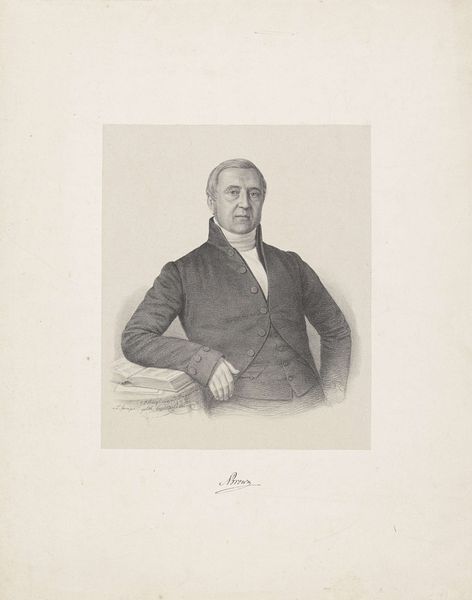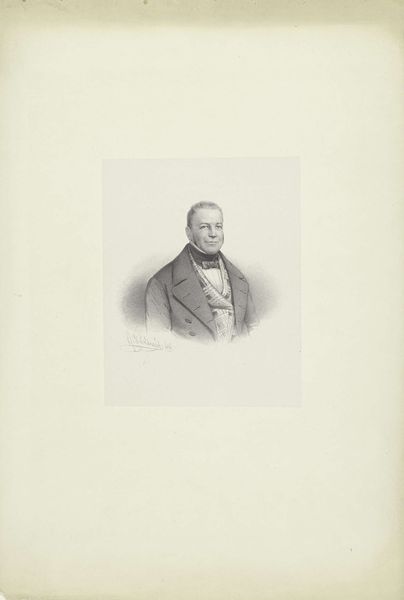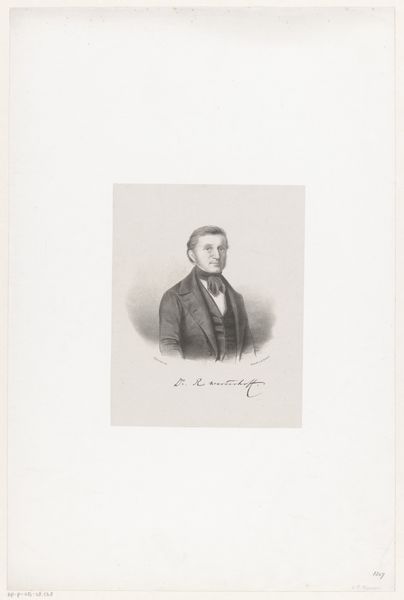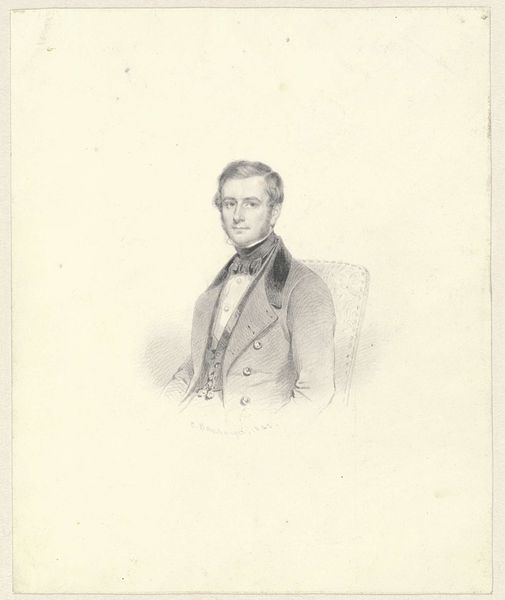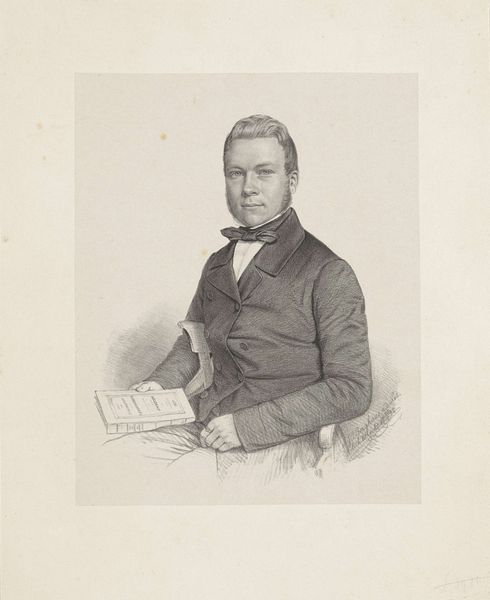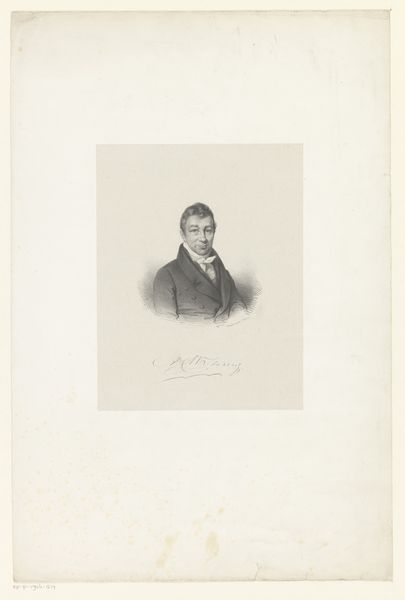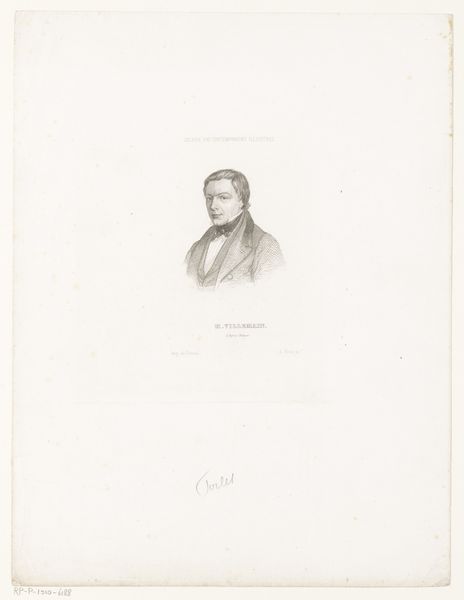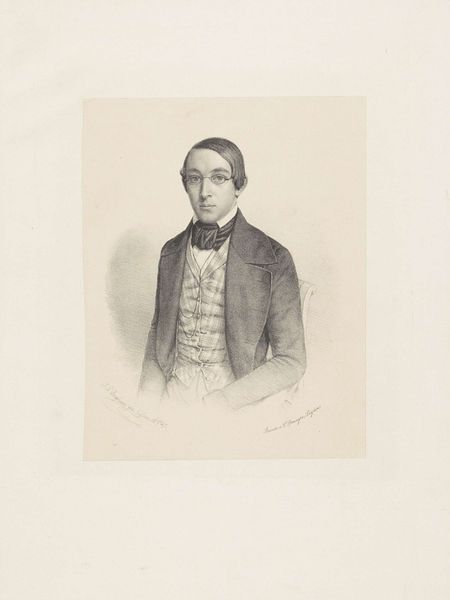
print, graphite, engraving
# print
#
historical photography
#
graphite
#
genre-painting
#
graphite
#
engraving
#
realism
Dimensions: height 477 mm, width 373 mm
Copyright: Rijks Museum: Open Domain
Editor: Here we have "Portrait of an Unknown Man," a graphite and engraving print, dating somewhere between 1857 and 1873. The composition and detail using simple graphite is quite striking. What compositional elements stand out to you most in this portrait? Curator: Note the subtle yet pervasive contrast employed throughout the work. Consider how the artist orchestrates light and shadow not merely to depict form, but to articulate spatial relationships within the frame. The sitter’s gaze, directed just off-center, invites our own. Editor: I see it! How does the texture of the engraving contribute to this sense of space and engagement? Curator: The density and direction of the engraved lines are paramount. Observe the hatching around the face and coat, which articulate volume and texture while also directing the viewer's eye. What effect does this technique have on the overall composition, in your view? Editor: It seems to flatten some areas while accentuating others, almost playing with the two-dimensional surface, rather than fully committing to three-dimensional illusionism. It keeps the viewer aware of the artwork's own materiality, its existence as an object. Curator: Precisely. The strategic deployment of varying line weights functions as a type of visual syntax, offering depth and definition. By carefully calibrating these graphic elements, the artist constructs a work that’s rooted in process while conveying something more representational. Editor: It’s fascinating how much complexity arises from such a seemingly simple medium. Thank you for sharing this deeper look into how this was put together. Curator: It is important to see how simple strokes make such an image! It was good speaking with you.
Comments
No comments
Be the first to comment and join the conversation on the ultimate creative platform.


